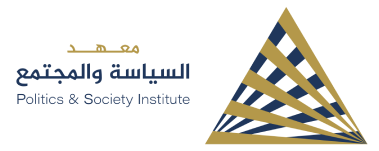Politics and Society Institute… “Brothers of the Brotherhood, a case that overcomes organization and interacts with the committed sphere”

On Saturday, the Institute of Politics and Society discussed a research paper entitled “The Muslim Brotherhood in Jordan: Internal turmoil in light of the generational gap and the transgression of organizational frameworks” by researcher Muhammad Al-Amin Assaf, in which a group of experts, specialists and activists in political and Islamic affairs participated.
Assaf presented the paper in five themes, starting with the fluctuations of currents within the Islamic movement and the change in its forms and definition, and reviewed the most important effects, aspects and parties of the internal crisis in the movement, up to its current status, and reviewed a set of practical critical milestones in the past years, and how this case established a state of expansion outside the organization framework after the desertion of several active elites in the movement.
The paper referred to what the researcher called “the case of the Brothers of the Brotherhood” and the expansion of the “committed sphere” in his description of the tendency of large numbers of committed youth to spaces outside the frameworks of the Muslim Brotherhood, which are less politicized, and to individual and institutional phenomena that go beyond the state of political Islam, but they do not conflict with the moral core of Islamic movements, even if they differ with them in terms of political perceptions, tools, and the quality of discourse, the most important characteristic of this committed sphere is that it has a high culture and advanced intellectual positions, and that it uses more modern and flexible tools than used by traditional political organizations.
In its third theme, the paper discussed the objective reasons for the emergence of such expansion, starting with the development of the state of political awareness among youth groups within the Brotherhood during the Arab Spring period and their interaction with the various political components of the Jordanian field, leading to the opening of new knowledge and cultural horizons in the era of social media and the advancement of technology and information sources and the difficulty of restricting it, finally, the impact of the involvement of Islamic youth in civil society institutions and the development of its tools and discourse, Assaf also clarified that there is a development in the image of the political actor among the youth elites in the committed space from his confrontational image to a more flexible and pragmatic one.
The paper emphasized that this case comes in global contexts linked to the world’s tendency to liquefaction concepts and institutions in general and its tendency to forms that are less solid than the previous one, in addition to the political crisis in the Arab region and Jordan on particular.
The paper also refers to the possibilities and tendencies of some Islamic currents after the change in the political positions in the country and the opening of new horizons, and how the crisis of redefinition and representation faced by those who left the organization puts the option of returning to them again, The paper raises several questions, the most important of which is whether the political movements in their current form are still able to attract young people again and whether these organizations possess the capabilities, tools and skills that are appropriate for these generations, and is it sufficient for these movements to gather their internal ranks to be attractive to young people, especially in light of the long distance between them and the skills of perceptions and tools of generations that practice, understand and express politics in a completely different way.
While the participants participated in the discussion of the paper, in addition to raising a set of qualitative illuminations, the most important of which are questions about some concepts that are still stuck in the mentality dealing with the Brotherhood case, and then the mechanisms of dealing with the movement in an objective manner that ensures that no variables and determinants are overlooked from the many determinants that affect the Brotherhood’s situation, and passed on the development of the situation and mentality of the youth among the various factions of the Brotherhood, and the redefinition of political activity and the bases for its evaluation.
